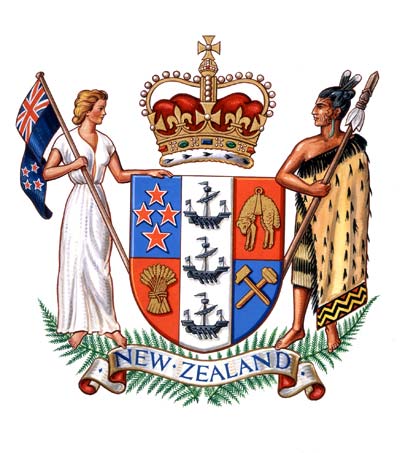
The first formal New Zealand coat of arms was adopted in 1911 and revised in 1956. The revised coat of arms, shown here, includes a European woman and a Māori man, representing the immigrant and indigenous peoples of the country. The wheat sheaf and the lamb on the shield represent agriculture; the hammers represent industry. The crown above the shield is a reminder that New Zealand is a constitutional monarchy. Fern fronds are found at the foot of the coat of arms because the fern is a popular symbol of New Zealand (many sportspeople representing New Zealand wear a silver fern on their uniforms).
Te whakamahi i tēnei tūemi
Manatū Taonga – Ministry for Culture and Heritage, Heritage Operations
This item has been provided for private study purposes (such as school projects, family and local history research) and any published reproduction (print or electronic) may infringe copyright law. It is the responsibility of the user of any material to obtain clearance from the copyright holder.






Tāpiritia te tākupu hou